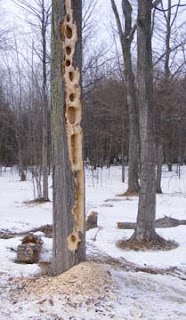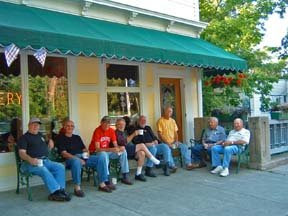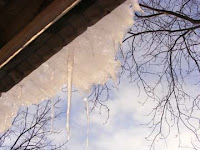 Except for a family vacation when I was a teenager, I have no real memories of my birthplace, Aberdeen, South Dakota. No visual or detailed memories, anyway—only a warm, happy response to any tiny bungalow covered with grey shingles, which after many years I realized must connect to otherwise unretrievable memories of that first family home. I began first grade and graduated from high school in Joliet, Illinois, where my mother and youngest sister live there to this day. Periodically, then, I make my way south down M-37 to Grand Rapids, tilt southwest toward Holland, and finally venture into the suburban sprawl of northwest Indiana and northeast Illinois, a very different world from my Up North country farmhouse and small-town bookshop.
Except for a family vacation when I was a teenager, I have no real memories of my birthplace, Aberdeen, South Dakota. No visual or detailed memories, anyway—only a warm, happy response to any tiny bungalow covered with grey shingles, which after many years I realized must connect to otherwise unretrievable memories of that first family home. I began first grade and graduated from high school in Joliet, Illinois, where my mother and youngest sister live there to this day. Periodically, then, I make my way south down M-37 to Grand Rapids, tilt southwest toward Holland, and finally venture into the suburban sprawl of northwest Indiana and northeast Illinois, a very different world from my Up North country farmhouse and small-town bookshop. It’s good to be with family, and it’s a “trip” encountering and dredging up and sharing old memories. While I’ll never be a Michigan “native,” though, Michigan has been my home for almost 40 years, and I’m always homesick in Illinois. The memory banks, Illinois and Michigan, are mostly separate from one another. That’s why it gave me a warm, happy feeling to find pieces of northern Michigan down there on the prairie while out walking my dog. In case you can’t read the letters in this image, they spell out “East Jordan Iron Works” and “East Jordan, Michigan” and “Made in USA.”
My mother was reading the latest Jan Karon novel while I was there. I took along Walter Mosley’s BLONDE FAITH to read in bed at night. On Saturday my mother and sisters and I visited the Joliet Historical Museum and found a book signing in process. Paul W. Jaenicke and Ralph E. Eisenbrandt were signing ELGIN, JOLIET AND EASTERN RAILWAY, one of the “Images of Rail” series put out by Arcadia Publishing, a publisher doing an excellent job preserving local history throughout the Midwest. The reason my parents moved from Aberdeen to Joliet was that my father took a job with the EJ&E. (We were already a railroad family, my father a surveyor in South Dakota for the Milwaukee Road, his father a “hogger” for the Pennsylvania Railroad back in Ohio.) “’Egypt, Jerusalem and Everywhere,’ we called it,” one of the authors in Joliet on Saturday said. I’d never heard that one before.
Historically, though, iron and steel connected Michigan and Illinois in many ways. Then there was the Illinois & Michigan (I&M) canal, passing right through Joliet’s neighbor town, Lockport. I like the state names linked that way. I also like the fact that we share the same Great Lake and that its name is Michigan.




























